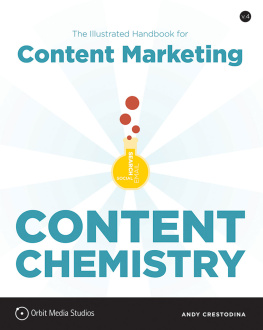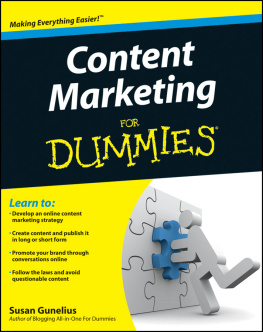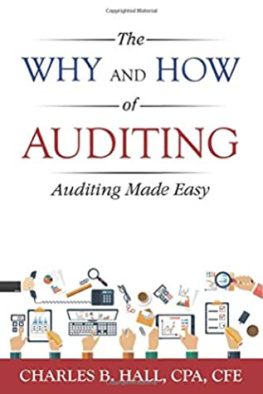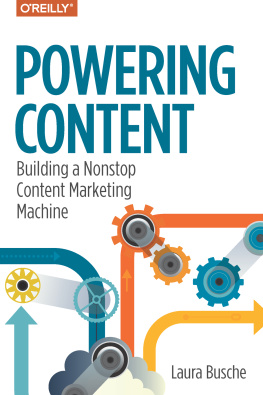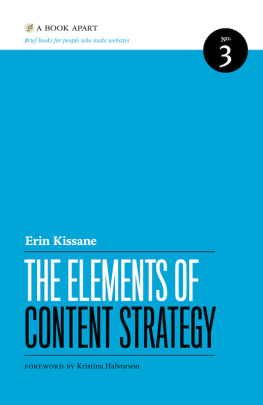Foreword
The dreaded content inventory and audit
To many of us, they are unnerving a bit like a visit to the dentist. We know regular check-ups are important, but fear the outcome. Maybe we will have to face painful treatment, return trips and high costs to put things right. Then, before we know it, the next check-up is due and the stressful cycle starts again.
But just as looking after your teeth and consulting a dentist pay off, so do the content inventory and audit. They provide a systematic means to a valuable end and are a vital part of a core content strategy. Done regularly, they lessen the stress, allowing us to catch problems while they are easier to fix.
The rapidly-evolving, multi-disciplinary world of digital communication urgently needs to learn about content auditing to sort itself out. As organizations of all shapes and sizes struggle to work out their publishing guidelines, a massive array of content is being let loose across multiple channels and devices, for widely different purposes and audiences. Keeping track of it, let alone diplomatically evaluating, governing and planning it, is a major challenge.
How can we be sure that we are setting the right standards for our content teams to comply with? Its easy to say that content should meet our organizations business strategy and our audiences needs but often the two are hard to synchronize. The role of the content strategist is to bridge the gap and lead the way ahead.
Just as a single, unified content strategy has many integrated layers, working out a content audit is a highly collaborative task. We need input from a range of stakeholders to shortlist what to check for in different contexts. An audit that addresses all aspects not only results in a better customer experience but commits everyone to maintaining high quality content.
Often people ask: which comes first, the content strategy or content audit? Usually they work hand in hand. Before you start a content inventory or audit, you must know where you want to head strategically. An initial content audit will verify or uncover issues to address in the strategy. Once the strategy is in place, you can design follow-up audits to monitor performance and influence further tactics.
A few years ago, many of us working in the developing discipline of content strategy were anxiously trying to learn from one another how best to go about content inventories and audits. What their full scope was. What worked well. What went wrong. The analytical skills we needed to master. And the lions and tigers we encountered on the way.
Then along came Paula Land a calm, cool, highly experienced voice of reason who methodically drew all the complex strands together, introduced a time-saving toolkit of techniques, and spoke us through them clearly.
Whether you are new to the field, highly experienced, or somewhere in between, you are lucky to have immediate access to Paulas wisdom through this excellent book. She explains the why as well as the what and how of both a content inventory and an audit and gives meticulous, step-by-step guidance to keep you, your organization or clients on a practical analytical track for continuous improvement throughout your content projects.
This is a handbook that removes the dread and leads you confidently ahead, with obvious returns on all your efforts. Keep it close beside you. Im sure you will continue to refer to it for many years to come.
Diana Railton, DRCC
Bath, UK
Preface
If people are to be expected to put up with turning on a computer to read a screen, they must be rewarded with deep and extremely up-to-date information that they can explore at will. |
| -- Bill Gates, Content is King |
Bill Gates is neither a content strategist nor a content marketer, but this statement from his 1996 blog post evokes definitions of what we now call content strategy: the analysis and planning related to delivering the right content to the right audience at the right time. Deep. Up-to-date. Those terms imply evaluation against some set of standards to assess depth, currency, relevance, and quality. To determine what is good, we need to know what bad looks like.
1. Advocating for Quality Content
As web content professionals, we have the opportunity and obligation to advocate for quality content. The tactics and strategies we use to create, publish, and govern quality content include the content inventory and audit, which, together, form the subject of this book.
A comprehensive content strategy is built on a foundation of thorough understanding and analysis of existing content, assessed against business goals, user goals, standards, and best practices. The first step in developing that analysis is the content inventory, a dive into existing content to understand the quantity, type, and structure. The second step, the content audit, builds on the inventory. When you audit content, you evaluate it against goals and standards, and you analyze it for quality and effectiveness, revealing information that can be used to improve existing content and plan for the future state.
Together, the content inventory and audit combine technologys ability to quickly gather and process data with the human brains ability to use that data to analyze and strategize.
2. Its a Big Web Out There
According to a web-server survey published by Netcraft, in March of 2012 (the last date for which information was available as this book was going to press), live websites numbered nearly 650 million. By the time you read this book, of course, that number will have increased. Thats a lot of content. Somewhere out there, 650 million or so people are looking at their sites wondering how to get a handle on their content how to know what they have, how to know whether its any good, and how to know what good even means.
Do you ask yourself those questions? If so, I have a proposal. Start by analyzing what you have. Start with a content inventory and an audit.
3. This Books Audience
This book is intended for anyone doing any kind of digital project that involves an existing body of content. If you are a student of content strategy or a new-to-somewhat-experienced content strategist, site manager, or content owner charged with improving a website, this book is for you. If youre an experienced content strategist, you may find tips that you can add to your auditing toolbox. If you own a business website, this book may convince you of the value of monitoring your content and incorporating content strategy and governance into your organizational processes.
4. This Books Purpose
This handbook introduces the concepts of inventory and audit in a business context, giving practical tips for putting data and analysis together to form insights that can drive a content project forward.
In my experience as a content strategy consultant, the inventory and audit are the necessary first steps to planning and implementing a content improvement project. Because these tasks can seem overwhelming, and because time and resources are always limited, it is important to take the time to plan, scope, and focus efforts for maximum value and reduce wasted effort. The strategies and tactics discussed in this book can help you make the most of your time and get the most valuable insights possible from your efforts.


